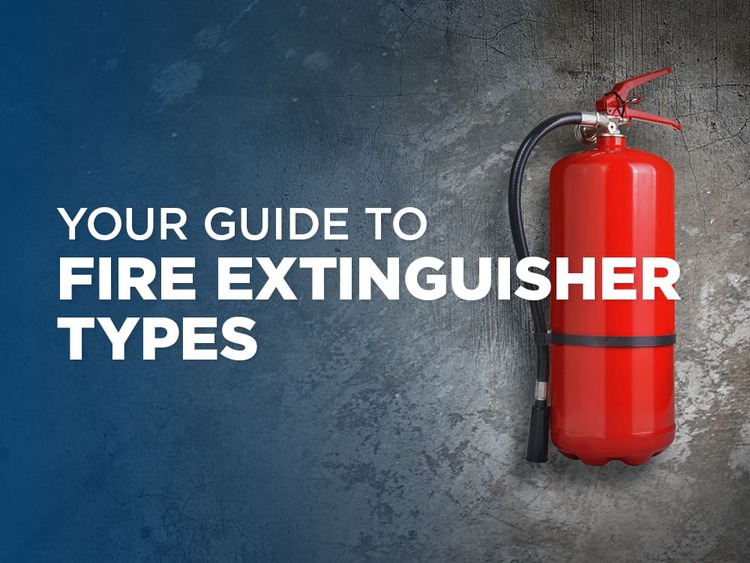Fires are not created equal. That’s why not all fire extinguishers are the same—and why it’s important for employees to know which type is needed for any fire that flares up in your workplace.

What Are the Classes of Fire Extinguishers?
Fire extinguishers are divided into classes that define the types of fires the extinguisher can fight. There are five classes (A, B, C, D and K). Each class is manufactured to suppress a particular type of fire and uses a specific extinguishing material to douse the fire. Always check the label to know what types of fires an extinguisher can be used on—using the wrong type may fan the flames instead of suppressing the fire.
According to OSHA, air pressurized water, carbon dioxide (CO2) and dry chemical are the three most common types of fire extinguishers, with wet chemical extinguishers also used often. For general use, Mike Duffield, EMC Risk Improvement Manager, sees multi-purpose fire extinguishers used most often. These extinguishers contain a chemical, such as potassium carbonate, to extinguish A, B and C class fires.
“If your business doesn’t have a commercial kitchen, work with live electrical equipment, have a large stash of combustibles in warehouses or work with dangerous chemicals, an ABC fire extinguisher may be all that is required,” Mike explains.
Fire Extinguisher Types and Uses Chart
| Class | OSHA Symbol | Type of Fire | Materials Burning | Extinguisher Type Needed |
|---|---|---|---|---|
| Ordinary combustibles | Wood, paper cloth, rubber and some plastics | Water or multi-purpose dry chemical | ||
| Flammable liquids | Oils, gasoline, some paints, solvents and other flammable liquids | CO2 or multi-purpose dry chemical | ||
| Electrical equipment | Energized electrical equipment, electrical panel, wiring or motors | CO2 or multi-purpose dry chemical | ||
| OSHA: no symbol | Metals | Powders, flakes or shavings of combustible metals (e.g. magnesium, titanium, sodium or aluminum) | Dry powder | |
| Kitchen fires in kitchen appliances | Oils or fats | Wet chemicals |
What Do You Do If There’s A Fire?
When any type of fire occurs, there are critical steps to take before picking up an extinguisher.
- Quickly get employees get out of the area and to a safe location
- Designate someone to call 911
- Make sure anyone helping to extinguish the fire is trained on fire extinguisher use
- Ensure there is a safe way out for yourself and anyone assisting with extinguishing the fire
- Confirm the extinguisher(s) available are the correct type to use on the fire
- Determine if the fire is small enough for your fire extinguisher(s) to handle; if not, leave immediately and wait for firefighters to arrive
Common Fire Extinguisher Problems to Avoid
Fires often cause panic. Be sure to have a plan in place and train all employees, so they are prepared if a fire breaks out. Additionally, Mike recommends routinely inspecting your workplace and extinguishers to avoid additional dangers.
- Ensure extinguishers are mounted and properly identified—Keep extinguishers in a highly visible location with signage indicating what types of fires it can be used for. “If the extinguisher isn’t mounted, it tends to get moved around and may be difficult to find in the ‘heat of the moment,’” Mike warns. For assistance in correctly placing extinguishers, review NFPA’s Fire Extinguisher Location and Placement fact sheet.
- Keep fire extinguishers in working order—Mike sees many claims caused by a small fire that grows out of hand because the fire extinguisher didn’t work. Use EMC’s Fire Extinguisher Monthly Inspection chart as a guide during your next inspection.
- Always have Class K extinguisher in kitchens—Many kitchens make the mistake of relying on a multi-use extinguisher rather than a Class K one. If a kitchen has a self-contained fire suppression system, a Class K is the compatible extinguisher.
